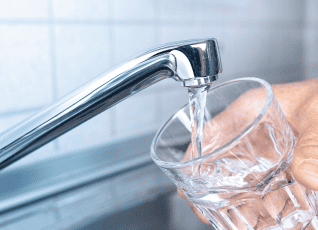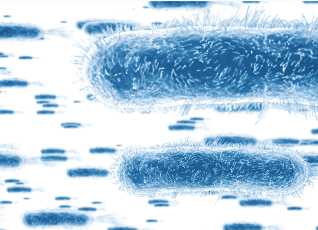Understanding Heterotrophic Plate Count (HPC) Bacteria in Water Systems

Heterotrophic Plate Count (HPC) bacteria are naturally occurring organisms commonly found in water systems. While their presence is not unusual, HPC bacteria are not regulated or routinely monitored as contaminants in drinking water due to their high variability and typically elevated concentrations. HPC bacteria and human health The presence of HPC bacteria in drinking water is a common occurrence. However, it is important to note that these bacteria do not pose direct hygienic (disease-related) significance. Extensive research conducted by experts in the field consistently fails to establish any correlation between HPC bacteria concentrations in drinking water and threats to human health. These findings provide strong evidence that consuming water with HPC bacteria does not jeopardize our well-being. Nonetheless, the detection of HPC bacteria in a drinking water system can serve as an indicator of potential underlying issues. These issues may include inadequate treatment, poor maintenance of the distribution network, or elevated contamination of water bearing equipment. It is crucial to ensure the proper monitoring of water quality and take prompt corrective actions when necessary. While HPC bacteria themselves are not harmful to humans, changes in HPC concentrations may indicate changes in water quality. Therefore, it is essential to remain vigilant in evaluating complex microbial systems. HPC bacteria and Legionella Heterotrophic plate count bacteria and Legionella are bacteria that are commonly found in water sources. Legionella is a genus of bacteria that can cause Legionnaires’ disease, a severe form of pneumonia. HPC bacteria, on the other hand, are a group of bacteria that are commonly used as indicators of water quality. Though high levels of HPC in water systems can serve as an indicator of elevated microbial activity, it is not an indicator for Legionella itself. Monitoring and controlling the levels of HPC bacteria can help understand changes in water quality that potentially could impact the risk of Legionella contamination and subsequent health risks. Role of HPC monitoring in water treatment HPC monitoring plays a vital role in evaluating the effectiveness of municipal water treatment processes. Water providers strive to achieve HPC levels below 500 colony forming units per milliliter (cfu/mL) after treatment to minimize any potential interference with culture-based coliform testing, ensuring accurate and reliable results. With advancements in testing methods, these innovative approaches have successfully mitigated elevated HPC concentrations, thus eliminating any potential impact on coliform test outcomes. Variability of HPC concentrations HPC concentrations vary significantly across different water systems. Comparisons between various sources, such as New Jersey drinking water systems, dental water lines, hospital hot water, and Michigan lakes, highlight the diverse ranges in HPC presence. Water Source HPC (cfu/mL) Reference NJ drinking water system 320 to 1,000,000,000 LeChevallier et al., 1987 Michigan lakes 3,000 to >100,000 Jones et al., 1991 Tuscon, AZ tap water >3,000 Pepper et al., 2004; Chaidez and Gerba, 2004 Apartment building 300–300,000 Bagh et al., 2004 Administration building hot water 24,700–144,000 Sheffer et al., 2005 Hospital hot water 60,000 Sheffer et al., 2005 Dental water lines >3,000 Rice et al., 2006 Research building 16,000 (average) Siebel et al., 2008 New university building >10,000 Nguyen et al., 2008; Nguyen et al., 2012 Hospital hot water 8,000–27,000 Zhang et al., 2009 Hospital hot water 2,900 (average) Duda et al., 2014 New office building 1–100,000 cfu/cm2 (biofilm) Inkinen et al., 2014 Commercial buildings 3 – 2,100,000 Pierre et al., 2019 Case Study: Managing HPC bacteria challenges A case study from a California hospital in 2016 demonstrates the practical management of HPC bacteria. While preparing to open a new patient tower, the hospital found bacteria levels exceeding state and federal EPA limits in the building water system, necessitating intervention. By implementing copper-silver ionization to continuously disinfect the water system and sediment filtration to remove incoming sediment, the hospital successfully controlled bacterial levels and reduced corrosion damage to the plumbing system. While HPC bacteria are common in water systems, they do not pose a significant health threat nor serve as reliable indicators of other waterborne pathogens. Routine HPC monitoring primarily serves to track changes in water quality and treatment efficacy, rather than for health risk assessments. References Allen 2004: Heterotrophic plate count bacteria—what is their significance in drinking water? Duda 2015: Lack of correlation between Legionella colonization and microbial population quantification using heterotrophic plate count and adenosine triphosphate bioluminescence measurement Pierre 2019: Water Quality as a Predictor of Legionella Positivity of Building Water Systems
Legionella and Waterborne Pathogens 101 for Plumbing Engineers

Successful plumbing engineering involves the comprehensive understanding and meticulous control of waterborne pathogens, with a particular focus on Legionella. These harmful pathogens can infiltrate building water systems through various means, such as contaminated water sources or inadequate water treatment. To effectively mitigate the risk of Legionella and other waterborne pathogens, plumbing engineers must possess in-depth knowledge of the specific characteristics of these microorganisms, their transmission routes, and the factors that contribute to their proliferation. By implementing robust water management strategies into their system designs, plumbing engineers play a critical role in safeguarding public health and ensuring the safety of building occupants. Understanding Legionella Legionella is a gram-negative bacterium belonging to the Legionellaceae family, which encompasses more than 60 species and serogroups. Among these, approximately half have been linked to various diseases. Notably, Legionella pneumophila is responsible for over 90% of reported cases of Legionnaires’ disease, a severe form of pneumonia that is contracted through the inhalation and aspiration of water droplets. Legionella growth in building water systems Legionella, a bacterium found naturally in surface and groundwater sources, typically exists in low concentrations in the source water. Legionella and waterborne pathogens can withstand municipal treatment processes and proliferate within building water systems that provide suitable growth factors. Legionella exhibits growth within a specific temperature range, temperatures commonly found in building water systems. Studies show elevated temperatures may reduce the potential for Legionella growth, however, it’s important to consider the impact of factors such as scale, biofilm, and water quality in buildings, as these factors may impact the effectiveness of temperature on Legionella and pathogen growth. Impact of biofilms Biofilms, which are complex communities of microorganisms, consist of cells that adhere to each other and often to a surface. These intricate structures can harbor both pathogenic and non-pathogenic bacteria, creating a diverse and dynamic ecosystem. By providing a protective shield, biofilms enable bacteria to withstand physical forces and disinfection measures, making them resilient and persistent. Moreover, biofilms serve as an ideal breeding ground for bacterial growth, amplification, and recolonization, perpetuating their presence and potential impact. Factors increasing risk Several factors contribute to the increased risk of Legionella and other waterborne pathogen outbreaks in buildings. These factors include the design of complex plumbing systems, which can create stagnant water areas that promote bacterial growth. Additionally, warm water environments provide an ideal breeding ground for pathogens, while increased water age further allows for the accumulation and proliferation of harmful bacteria. Moreover, low disinfection residual levels in the water supply can fail to effectively eliminate these pathogens. It is important to note that construction and renovation events in buildings can introduce additional vulnerabilities, disrupting the plumbing system and potentially exacerbating the risk of outbreaks. Sediment risk and damage Sediment buildup in plumbing systems is an additional risk factor. Sediment can accumulate over time, creating an environment that supports the growth of Legionella and other bacteria. Moreover, sediment can cause corrosion and damage to plumbing equipment, further increasing the risk of bacterial growth and system failure. Methods of Legionella reduction Engineers play a crucial and essential role in managing and reducing the risk of Legionella. By deepening their understanding of the impact of water quality on piping systems and considering Legionella risk during the design phases of building water systems, engineers can effectively implement comprehensive strategies to minimize the risk of Legionella outbreaks. The ASHRAE Standard 188, a widely recognized industry standard, establishes minimum requirements for Legionella risk management in building water systems. This standard provides clear direction and specific requirements for designing and maintaining building water systems that are safe and compliant. By adhering to these guidelines, engineers can ensure the health and well-being of building occupants while effectively mitigating the risk of Legionella contamination. For plumbing engineers, it is crucial to comprehend and regulate waterborne pathogens, such as Legionella. By implementing engineering solutions and performing risk assessments, the potential risk these pathogens pose to water quality and occupants of a building can be greatly diminished.